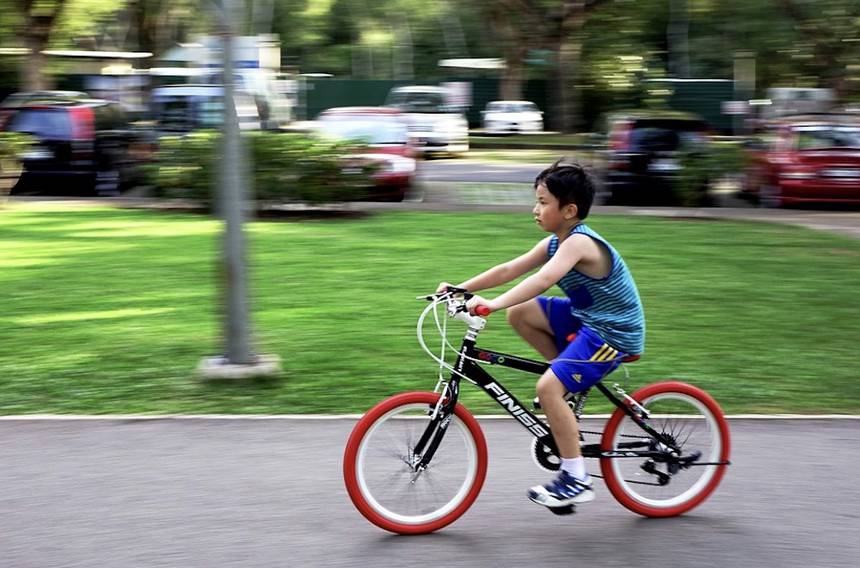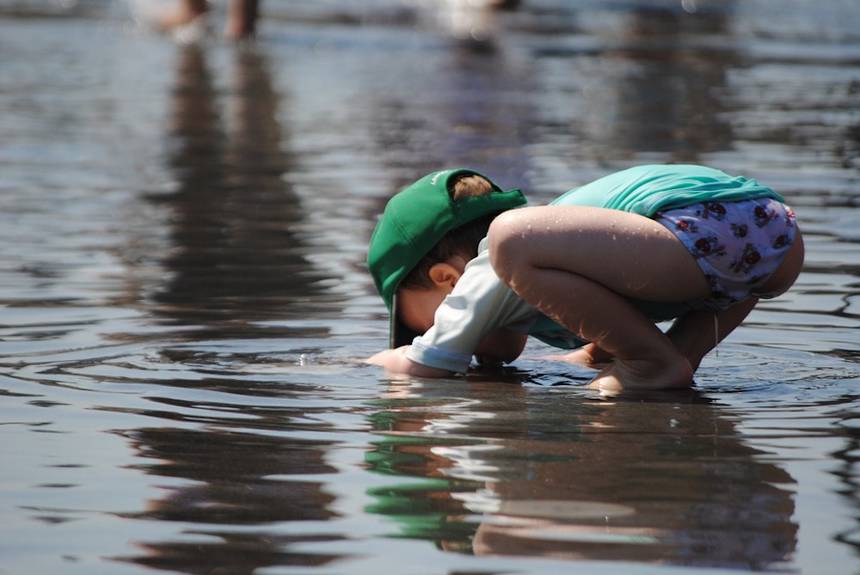The Power of Play
“‘Engaging in risk is actually a very important aspect of preventing injuries.’ The more kids experiment with pushing their physical and mental limits, the more they overcome phobias that could otherwise hamper them in adulthood.”
That’s why it’s called the POWER of play. What’s your favorite childhood game outdoors?
The riskier it is, the safer they’ll be in the long run.
Every youngster plays. From baby bears wrestling in a den to little goats jumping on each other to hamsters play-fighting in a cage, youth is synonymous with the instinct to play. It’s no different for human children, who want to run, roll, climb, and spin for no other reason than it feels wonderful.
Scientists used to think that the purpose of play was to practice for adulthood, but now they’re realizing that play has a powerful effect on psychological development. As explained in a new CBC documentary film called “The Power of Play“, play develops the prefrontal cortex, the part of the brain responsible for risk assessment and coping with stress. When play is withheld from a youngster, he or she grows up to be an adult who is less empathetic and less able to read others’ emotions.
The first half of the 45-minute documentary, narrated by David Suzuki, looks at the animal kingdom. It gives many remarkable examples of play, even in creatures that you might not think of as playful – komodo dragons, fish, rats, octopi, and spiders.
Dr. Sergio Pelli of the University of Lethbridge in Alberta published groundbreaking research that found the prefrontal cortexes of white rats were underdeveloped and the nerve cells disorganized when they were not allowed to play as babies.
Shocked by the findings, Pelli couldn’t help but wonder what similar disfigurements occur when human children are also deprived of play. He grew up playing freely in the riverbeds of Australia and said the first thing he noticed upon moving to Canada was how few children were outside enjoying Lethbridge’s wonderful coulees. He says in the film,
“My concern is that denying young children the opportunity to engage in play has led to them not getting the kinds of experiences that actually prepare them to be able to deal effectively with an unpredictable world of adults.”
This becomes the focus of the second half of the film. We are seeing a dramatic decline in the mental health of young people since the 1980s, which is when video games became popular and parental paranoia about kidnappings skyrocketed. Today one in 10 university students is depressed; millennials are three times more likely to develop psychological problems than their parents; and the average Canadian kid spends three times more time on digital devices than outside. (That estimate seemed generous to me, as I know kids who spend zero time outdoors.)
Dr. Mariana Brussoni, a professor of developmental psychology at the University of British Columbia, believes that the riskier the play, the better for the kid and their brain development. In fact, as she says in the film, “Engaging in risk is actually a very important aspect of preventing injuries.” The more kids experiment with pushing their physical and mental limits, the more they overcome phobias that could otherwise hamper them in adulthood.
Brussoni works with Norwegian researcher Ellen Sandseter, whose ‘criteria for risky play’ have been mentioned before on TreeHugger. The list says that play must be rough and tumble, include dangerous elements (i.e. fire), involve speed and heights, employ hazardous tools (i.e. hammer, saw), and allow for solitary exploration. This wonderful list may make parents cringe, but, as Sandseter says, it reflects what kids themselves want:
“When I started my research, risky play was always from the adult’s perspective. I wanted to talk to the children. This is something that they’re experts in.”
She describes kids’ reactions to risky outdoor play; they always talk about it as a feeling in their body, using a Norwegian word that translates as “scary-funny.” In other words, conquering discomfort and nerves results in the most fun.
Brussoni is worried that the kids who grew up protected from risky play in the ’80s are now becoming parents themselves. She fears a sort of “collective intergenerational memory fog” that wipes out the idea of risky play as a normal part of childhood. We need to fight against this and reintroduce risk in our children’s lives. She urges parents to be cautious about placing limitations on letting their kids be alone outside.
“Weigh it between a very, very, very unlikely event, versus something that could fundamentally influence your child’s health and development.”
The documentary is available for viewing online in Canada only. See “The Power of Play” on CBC: The Nature of Things with David Suzuki.
Original Article from Treehugger


